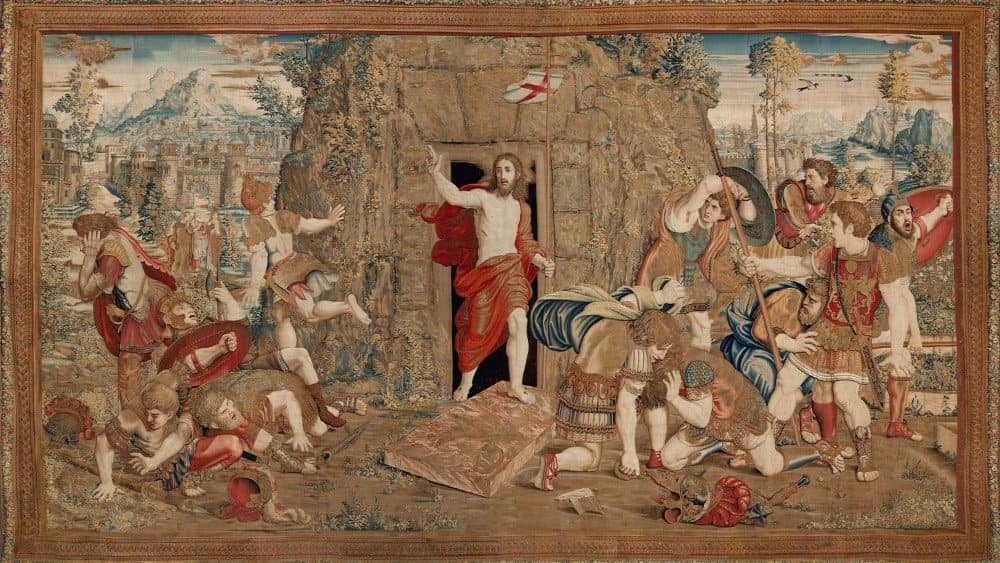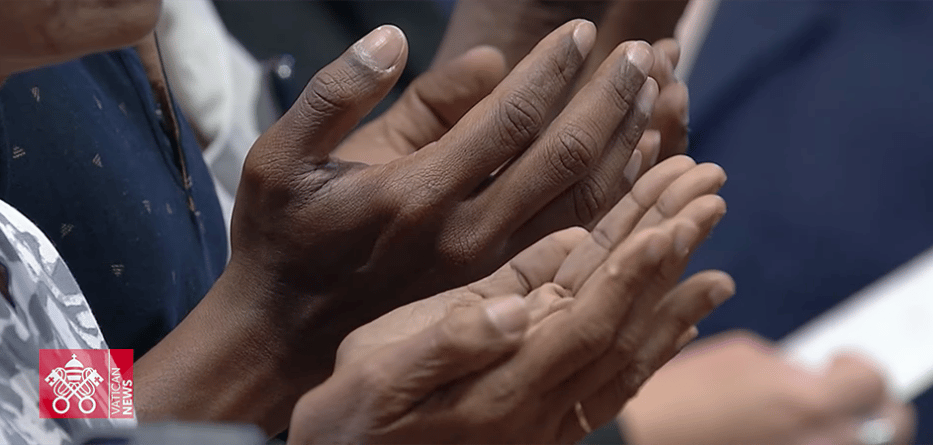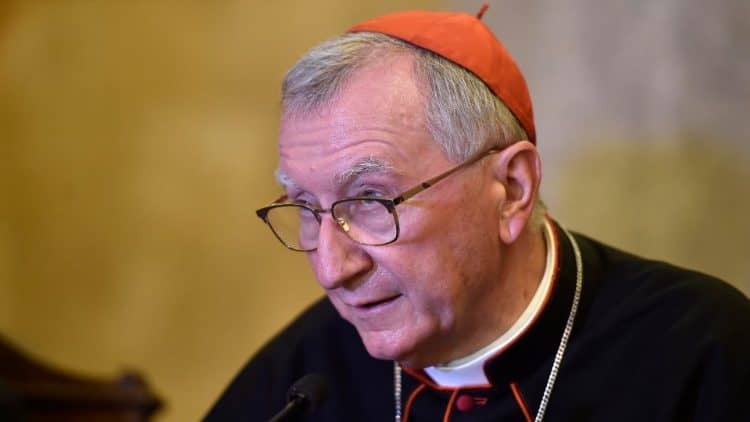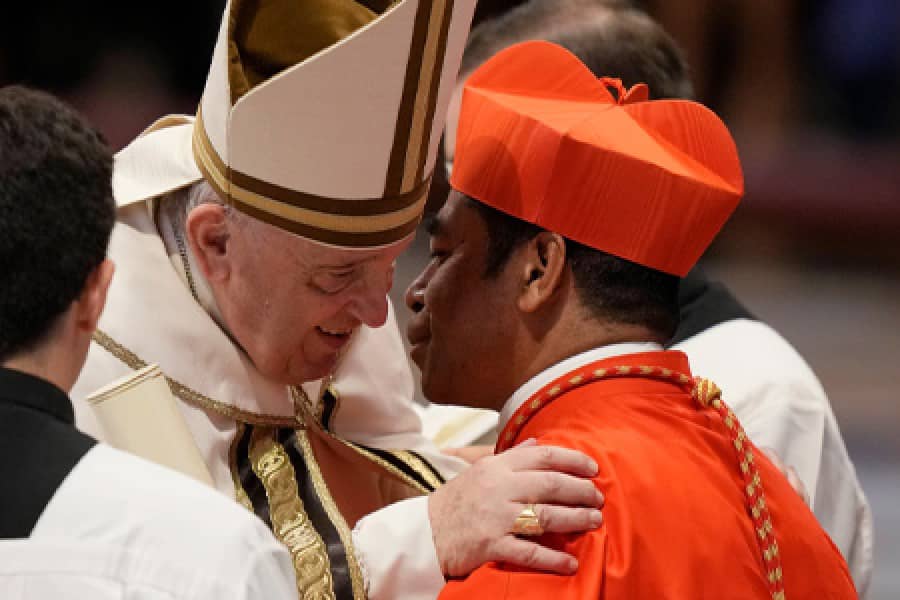The area of Catholic life through which the shock waves of the Second Vatican Council reverberated most powerfully must be architecture.
After the council, not only did the priest face the people and celebrate Mass in their own language, but music, pastoral ministry, catechesis, and preaching were all jolted by new ideas and theories.
For many people it was the church building itself, which made visible the theological and pastoral upheavals in the Catholic Church.
Old churches faced radical renovation as statues were taken down and consigned to the basement, tabernacles were moved to side chapels, altars were moved forward, pews and kneelers removed, and old wood or tile floors were smothered in wall to wall carpeting.
New churches were designed with radical egalitarian ideologies in mind. In suburbs all across America, Catholic churches sprang up that looked like oversized circus tents, teepees, or flying saucers that had crash landed.
Often the buildings were hastily designed and cheaply built from poor materials. It seemed Catholic Brutalist architecture was here to stay.
The greatest irony about the ecclesiastical architecture revolution that followed the council is that the liturgical ideologues explained that these were “churches for the people.”
The problem is the people themselves never liked them. Time and again older Catholics will tell me how their beloved old churches were torn from them and harsh, modernist buildings were imposed on their parish by pastors, bishops, and members of diocesan liturgical committees.
Now it all seems like a passing fad. New Catholic churches, especially in the American South, are being built in traditional styles of Catholic architecture. Some of the new churches being built are noble Gothic, Romanesque, or Neoclassical buildings; while others have taken the seventies “big tent” style of Catholic Church, but blended it with a traditional Catholic architectural vocabulary.
Many of the architects and pastors use furniture, fittings, sculpture, and stained glass salvaged from decommissioned churches, and there is a renaissance of new commissions from contemporary artists and craftspeople.
Michael Tamara reports here on some of the new churches being built across the United States. In Aiken, South Carolina, St. Mary Help of Christians is a graceful new building that combines elements of Romanesque architecture with an American mission style facade.
Also in a Romanesque style in South Carolina, is the church in my parish of Our Lady of the Rosary in Greenville. St. John Neumann, Farragut, Tennessee, and St. Catherine of Siena, Wake Forest, North Carolina, are two more churches built in a style that echoes the Italian Romanesque.
Just a few examples of new Gothic churches are the Cathedral of the Ordinariate of the Chair of St. Peter in Houston Texas—appropriately fashioned after an English Gothic parish church.
In Wyoming, the Carmelite monks who bring us Mystic Monk coffee are building a magnificent neo-Gothic monastery; while St. John the Apostle in Leesburg, Virginia brings back to life a very traditional American brick Gothic church. Also in Virginia is Sion Abbey and in Illinois, St. Kateri Tekakwitha rises in noble Gothic style.
Duncan Stroik is the master architect of the neo classical Catholic Church with examples in Spartanburg, South Carolina, the chapel of Thomas Aquinas College in California, the Shrine to Our Lady of Guadalupe in La Crosse, Wisconsin, and All Saints Church, Covington, Kentucky.
But are these traditionally style Catholic churches really what we need in the modern age? At the first building committee in our parish I asked the parishioners what kind of church they wanted and why. They answered, “Here in the South we Catholics are a minority. We want our church to look like a Catholic Church!”
But does that really matter? Does building in a traditional Catholic style work in a multicultural and diverse society? Are traditional styles consistent with the aims of the Second Vatican Council or are they a throwback to an earlier age promoted by nostalgic traditionalist Catholics?
Furthermore, architectural critics suggest that the traditional styles are simply a pastiche — an artificial ecclesiastical confection lacking both originality and authenticity. Isn’t a Gothic church in an American suburb a ghastly folly — no more authentic than Cinderella’s castle at Disneyland? Isn’t a Romanesque church next to an interstate just as fake as the mock Tuscan villa that houses an Italian food franchise in the next door retail strip?
I put these charges to the architect of our new church.
Christian LeBlanc is not a famous church architect. A dedicated, well read and traveled Catholic, he is a working architect whose bread and butter are restaurant renovations, dentists offices, strip mall makeovers, and office blocks.
LeBlanc was eager to build the new Our Lady of the Rosary Church, and when I discussed the idea that our Romanesque church would simply be a pastiche he replied, “Romanesque style churches have been built all over the world in various ways and with various adaptations for the last fifteen hundred years. Romanesque is a solid, respectable, and worthy Catholic style of architecture.
“Think of it this way,” he continued, “Romanesque is to church architecture as a sonnet is to poetry. You may write a sonnet and stick to the rhyme scheme and number of lines, but that doesn’t mean the poem is unoriginal. It is a sonnet, and many sonnets have been written before. Some have been very good. Many have been very bad. The question is not whether it is a sonnet, but whether it is a good sonnet. Sure, Romanesque has been done before like sonnets have been done before. The difference is, this is our sonnet. It is therefore original and unique.”
It is an argument I cannot fault.
The new churches being built across America might echo the past, but they do so here and now for today’s Catholics. While they are deeply rooted in the past, they are also designed with the ideals of the Second Vatican Council firmly in mind.
The new churches might be Gothic, Romanesque, or Neoclassical, but they are our Gothic, Romanesque, and Neoclassical buildings. Their authenticity relies not so much on the bricks and mortar or architectural design, but on the authenticity of the Catholic liturgy being conducted there and more importantly, on the Catholic faith being lived out by their people in their everyday lives.

















